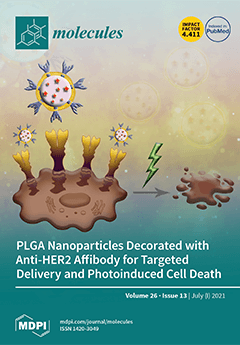High salt levels are one of the significant and major limiting factors on crop yield and productivity. Out of the available attempts made against high salt levels, engineered nanoparticles (NPs) have been widely employed and considered as effective strategies in this regard. Of these NPs, titanium dioxide nanoparticles (TiO
2 NPs) and selenium functionalized using chitosan nanoparticles (Cs–Se NPs) were applied for a quite number of plants, but their potential roles for alleviating the adverse effects of salinity on stevia remains unclear. Stevia (
Stevia rebaudiana Bertoni) is one of the reputed medicinal plants due to their diterpenoid steviol glycosides (stevioside and rebaudioside A). For this reason, the current study was designed to investigate the potential of TiO
2 NPs (0, 100 and 200 mg L
−1) and Cs–Se NPs (0, 10 and 20 mg L
−1) to alleviate salt stress (0, 50 and 100 mM NaCl) in stevia. The findings of the study revealed that salinity decreased the growth and photosynthetic traits but resulted in substantial cell damage through increasing H
2O
2 and MDA content, as well as electrolyte leakage (EL). However, the application of TiO
2 NPs (100 mg L
−1) and Cs–Se NPs (20 mg L
−1) increased the growth, photosynthetic performance and activity of antioxidant enzymes, and decreased the contents of H
2O
2, MDA and EL under the saline conditions. In addition to the enhanced growth and physiological performance of the plant, the essential oil content was also increased with the treatments of TiO
2 (100 mg L
−1) and Cs–Se NPs (20 mg L
−1). In addition, the tested NPs treatments increased the concentration of stevioside (in the non-saline condition and under salinity stress) and rebaudioside A (under the salinity conditions) in stevia plants. Overall, the current findings suggest that especially 100 mg L
−1 TiO
2 NPs and 20 mg L
−1 Cs–Se could be considered as promising agents in combating high levels of salinity in the case of stevia.
Full article






